Duma Team Chyulu Update: 01 March 2008
Participants:
James Mbuthia – team leader Julius Kyalo David Wambua Isaiah Ndei Sylvester Matheka Daniel Lekoiten
Area of operation:
During the month of March the Chyulu team patrolled the following areas: The triangle and waterholes of Tsavo East, the Laggas, Mbondeni, Nthongoni, The Tsavo River, Ngulia, Mzima springs and the Kisyula caves.
SNARES 19 ARRESTS 3
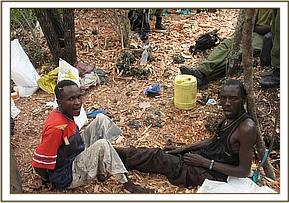
FINDINGS
The teams desnaring operations during the month of March were carried out as a joint operation with the Mtito desnaring team. Early last month the Mtito team had seen an increase in the number of poachers operating in the Triangle. The teams were based at the Tsavo East Mtito for a period of two weeks. The objective of the operation was to visit the waterholes and luggas located in the triangle in order to check for signs of poaching. A few footprints were found around the Kanga waterholes and an empty hideout was discovered. Many of the waterholes that we visited were found to be inactive meaning that the people using them have probably relocated to other areas due to the persistent pressure put on the hotspots by the desnaring team. A total of 19 snares were lifted. The animal presence in the area has increased which was encouraging and a number of elephants, buffaloes and other wildlife was seen, including snakes.

Around the Kenani station a poachers footprints leading towards the Tsavo River were seen and followed. The footprints lead us to some of the poacher’s items that had been hidden in a bush near Kenani.
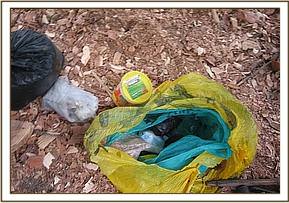
Our desnaring activities around Mbondeni were successful as we were able to arrest 3 wood carvers deep in the heart of the forest. The culprits had arrived in their hideout with enough supplies to last them about a week.
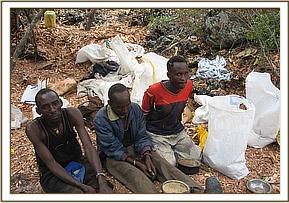
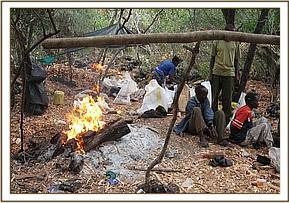
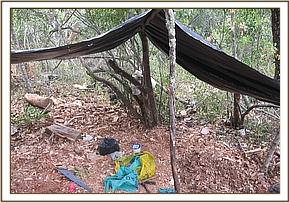

INTELLIGENCE INFORMATION The Mtito and Chyulu team leaders were involved in the gathering of information from several informers. Apparently the poachers have changed their areas of operation as well as their poaching methods. Even though snaring is the preferred method used by poachers some have chosen to use bows and arrows while operating deep in the park. We have found that the majority of the poachers are now going as far and the Tsavo River and behind Mzima springs for weeks and even months at a time. We have also found that the poachers also carry good quality clothes with them incase they should need to catch a bus thus making them more elusive and allow them to avoid arrest. Unfortunately we have also heard that ivory poaching is also taking place. For this reason we visited some homesteads around the Nthongoni area where poachers have been known to set up camp before and after leaving the park. On one occasion we found a wood carver and logger coming from the park around 3pm which we took as proof that illegal activities are taking place in the area.
ROAD REHABILITAION – KISYULA CAVES ROAD Tremendous success has been made since the road rehabilitation program started last year. As well as enabling us to carry out our desnaring activities more efficiently we have also been able to arrest more poachers and other perpetrators of illegal activities. The road that leads to Kisyula caves is being rehabilitated in order to make the caves accessible to tourists.
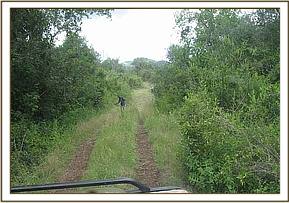

Report by James Mbuthia